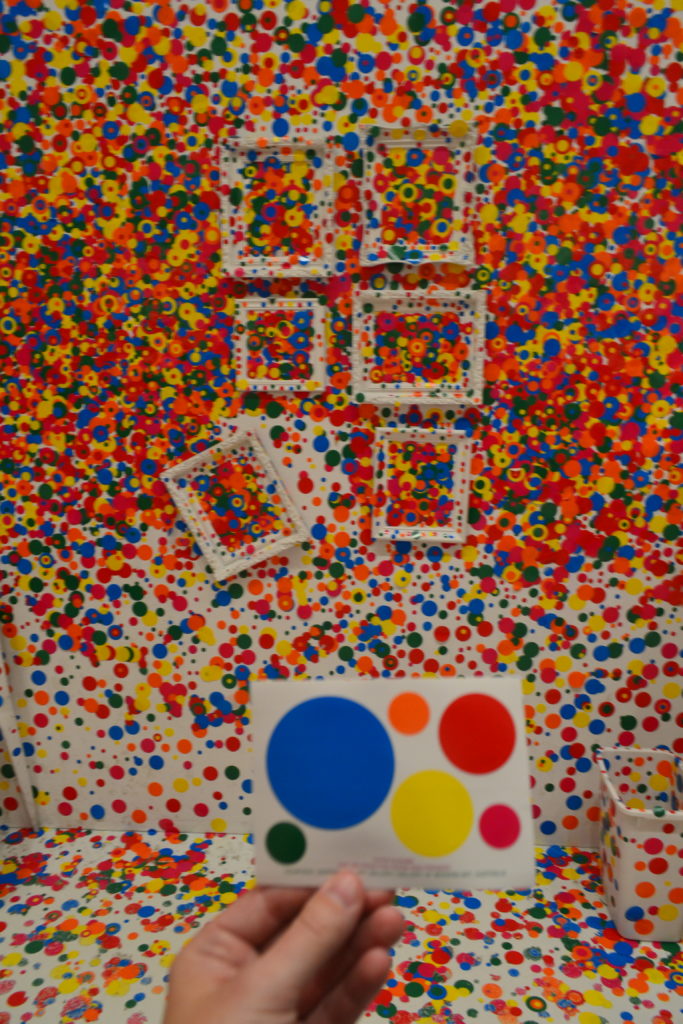
The changing nature of the room was documented through time-lapse photography. The obliteration room is a dynamic artwork transforming over time through the active participation of visitors.

The 2014 installation coincides with the 'We can make another future: Japanese art after 1989' exhibition. Everyone is invited to transform a completely white domestic apartment into a. The obliteration room revisits the popular interactive children's project developed by Yayoi Kusama for the Queensland Art Gallery's fourth Asia Pacific Triennial of Contemporary Art in 2002. This summer, we think youll go dotty for Yayoi Kusamas obliteration room. She calls this process 'obliteration', which means the complete destruction of every trace of something.Ĭhildren are invited to enter the world of the artist and 'obliterate' an Australian domestic space by adding colourful dot stickers to the white furniture, objects and surfaces in the large-scale interactive installation The obliteration room. Children and families can also take part in the multimedia interactive Kusama's World of Dots 2005 – in the exhibition space In her artwork, Kusama has used dots to cover many different surfaces and fill rooms.

This current installation coincides with ‘ Yayoi Kusama: Life is the Heart of a Rainbow ‘ on show until Sunday 11. They covered everything she saw – the walls, ceilings, and even her own body. QAGOMA’s The obliteration room revisits the popular interactive children’s project developed by Kusama for the Gallery’s fourth Asia Pacific Triennial of Contemporary Art in 2002. The obliteration room (2002present) is a family-friendly and participatory installation by one of the world’s most popular, well-loved artists, Yayoi Kusama (b. When leading contemporary Japanese artist Yayoi Kusama was a young girl, she started seeing the world through a screen of tiny dots. Over the duration of the exhibition, the proliferation of flowers will gradually cover all surfaces, ‘obliterating’ and transforming the space into a spectacular environment.Gallery of Modern Art, Children's Art Centre About Watch out for tickets, and help us turn Tate Modern into a riot of. Visitors are invited to apply red flower motifs to the walls, furniture and objects. First up, Yayoi Kusamas spotty dotty Obliteration Room as part of UNIQLO TatePlay. I saw the entire room, my entire body, and the entire universe covered with red flowers, and in that instant my soul was obliterated … This was not an illusion but reality itself’.įlower obsession, 2017, recreates a furnished domestic space. As she describes, ‘One day, after gazing at a pattern of red flowers on the tablecloth, I looked up to see that the ceiling, the windows, and the columns seemed to be plastered with the same red floral pattern.
Kusama obliteration room series#
Kusama’s obsessive patterning of polka dots and use of nets reference a series of aural and visual hallucinations that have haunted the artist for most of her life.Ĭommissioned for the NGV Triennial, Flower obsession, 2017, revisits the origins of Kusama’s art which she traces back to her childhood. With a career spanning more than sixty years, Kusama is recognised for her immersive installations that explore ideas of infinity and obliteration.

Japanese artist Yayoi Kusama is one of the most celebrated living artists. The Japanese artist Yayoi Kusama transformed a completely white room, including furniture, into a spectacle featuring her signature dots, helped by children who visited the exhibition over two.


 0 kommentar(er)
0 kommentar(er)
